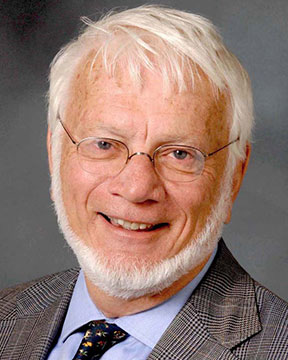ORALS
SESSION: MoltenTueAM-R3
| Fehrmann International Symposium on Sustainable Molten Salt and Ionic Liquid Processing (6th Intl. Symp. on Sustainable Molten Salt and Ionic Liquid Processing) |
| Tue Nov, 6 2018 / Room: Bossa (150/3rd) | |
| Session Chairs: Robin Rogers; Session Monitor: TBA |
12:35: [MoltenTueAM04]
Topological Forecast of 4D T-x-y-z Diagram Li,Na,Rb,La||F Vasily
Lutsyk1 ; Anna
Zelenaya
1 ; Maria
Parfenova
2 ;
1Institute of Physical Materials Science SB RAS, Ulan-Ude, Russian Federation;
2Tomsk State University of Control Systems and Radio-electronics, Tomsk, Russian Federation;
Paper Id: 120
[Abstract] Interest in systems with fluoride metals is due to the fact that they have been considered as a potential component for nuclear reactor fuel in molten salts. Three ternary systems of Li,Na,Rb||F, Li,Rb,La||F and Na,Rb,La||F on the boundary of quaternary system Li,Na,Rb,La||F have been analyzed. Model for the 4th boundary Na,Li,La||F was built earlier [1].
Li,Na,Rb||F has the simplest structure. Its eutectic type is complicated by the compound R=LiRbF<sub>2</sub>, decaying in the solid phase, and is characterized by two invariant equilibria: eutectic one and decomposing of R (dot Y). Space model includes 3 liquidus surfaces, 3 - solidus, 10 - solvus, 22 - ruled ones, and 2 horizontal complexes at temperatures of E and Y, and has 4 monophase regions (А, В, С, R), 9 - 2-phase (L+A, L+В, L+С, A+B, A+C, B+C, A+R, B+R, C+R) and 7 - 3-phase ones (L+A+В, L+A+C, L+B+C, A+B+C, A+C+R, A+B+R, B+C+R).
System Li,Rb,La||F is complicated by 5 binary compounds: R<sub>1</sub>=LiRbF<sub>2</sub> - with the exotermic decaying, and 4 incongruently melting R<sub>2</sub>=Rb<sub>3</sub>LaF<sub>6</sub>, R<sub>3</sub>=Rb<sub>2</sub>LaF<sub>5</sub>, R<sub>4</sub>=RbLaF<sub>3</sub>, R<sub>5</sub>=RbLa<sub>2</sub>F<sub>7</sub>. Compounds R3, R5 have endothermic decay and exist in the short temperature interval. Space model consists of 7 liquidus surfaces, 31 ruled surfaces, 6 horizontal complexes and includes 10 2-phase regions (L+A, L+B, L+C, L+R2, L+R3, L+R4, L+R5, R1+R2, A+R2, A+R4) and 16 3-phase regions (L+A+B, L+A+C, L+A+R2, L+A+R4, L+B+R2, L+C+R4, L+C+R5, L+R2+R3, L+R2+R4, L+R3+R4, L+R4+R5, A+R1+R2, A+B+R2, A+R2+R4, A+C+R4, B+R1+R2). 2-phase regions R1+R2, A+R2, A+R4 have a degenerated structure in the form of vertical planes.
System Li,Rb,La||F has a similar structure, but is sophisticated by the additional liquidus surface of R1=NaLaF<sub>4</sub>. As a result, there are 3 invariant equilibria, 8 liquidus surfaces, 35 - rules ones and 6 horizontal complexes on the boundary of 28 phase regions (L+A, L+B, L+C, L+R1, L+R2, L+R3, L+R4, L+R5, A+R2, A+R4, R1+R4, L+A+B, L+A+R1, L+A+R2, L+A+R4, L+B+R2, L+C+R1, L+C+R4, L+C+R5, L+R1+R4, L+R2+R3, L+R2+R4, L+R3+R4, L+R4+R5, A+R1+R2, A+R2+R4, A+R1+R4, R1+R4+C). Concentration fields in the 4 ternary systems with the different trajectories of phases have been analyzed [2-3].
4 ternary systems are used to forecast a topological structure of T-x-y-z diagram Li,Na,Rb,La||F [4] with 6 binary compounds: R<sub>1</sub>=LiRbF<sub>2</sub>, R<sub>2</sub>=NaLaF<sub>4</sub>, R<sub>3</sub>=Rb<sub>3</sub>LaF<sub>6</sub>, R<sub>4</sub>=Rb<sub>2</sub>LaF<sub>5</sub>, R<sub>5</sub>=RbLaF<sub>4</sub>, R<sub>6</sub>=RbLa<sub>2</sub>F<sub>7</sub> (R1 decays in solid, R2-R6 - with incongruently melting, and R3, R5 with endothermic decaying). In the ternary systems there are 14 invariant equilibria. For T-x-y-z diagram Li,Na,Rb,La||F it is forecasted 4 invariant 5-phase equilibria with 9 liquidus hypersurfaces.
References:
[1] R.N. Savchuk, N.V. Faidyuk, A.A. Omelchuk, V.I. Lutsyk, A.E. Zelenaya, Journal of Inorganic Chemistry, 59 (2014) 780-785. (In Russian)
[2] V. Lutsyk, A. Zelenaya, Journal of Physics: Conference Series, 790 (2017), 012020.
[3] Y.V. Pogorenko, R.M. Pshenychnyi, V.I. Lutsyk, A.O. Omel'chuk, IOP Conf. Series: Materials Sci. and Eng., 175 (2017), 012039.
[4] V.I. Lutsyk, A.E. Zelenaya, Journal of Physics: Conference Series, 790 (2017), 012020.
13:00 LUNCH
SESSION: MoltenTuePM2-R3
| Fehrmann International Symposium on Sustainable Molten Salt and Ionic Liquid Processing (6th Intl. Symp. on Sustainable Molten Salt and Ionic Liquid Processing) |
| Tue Nov, 6 2018 / Room: Bossa (150/3rd) | |
| Session Chairs: Sheng Dai; Session Monitor: TBA |
17:10: [MoltenTuePM212] Invited
Materials for the Nuclear Reactors of Generation IV: Polyhedration of the Chloride-Fluoride Reciprocal Systems Vasily
Lutsyk1 ; Vera
Vorob'eva
1 ; Maria
Parfenova
2 ; Marina
Lamueva
1 ;
1Institute of Physical Materials Science SB RAS, Ulan-Ude, Russian Federation;
2Tomsk State University of Control Systems and Radio-electronics, Tomsk, Russian Federation;
Paper Id: 96
[Abstract] Fluorides of metals with low neutron capture cross-section are usually considered as a basis for the fuel compositions of the molten salts nuclear reactor of IV generation. The advantages of chloride systems can be attributed to less aggressiveness towards the reactor material and lower melting temperatures. However, the chloride systems, compared to the fluoride systems, have higher vapour pressure and a low thermodynamic stability at high temperatures. Therefore, in order to ensure a more reliable operation of new generation reactors, it is advisable to consider the features of the reciprocal chloride-fluoride systems. Some additional problems exist in the manipulation with the multicomponent reciprocal systems: recalculation of the concentrations and dividing of the polyhedral complexes into the simplexes. Relation between the mass-centric coordinates in multicomponent salt systems have been considered in [1]. Tetrahedration of the quaternary reciprocal systems with the inner diagonals were discussed in [2-3]. Later, an algorithm for topological correction of lists of simplexes of different dimensions for polyhedration of multicomponent systems was formulated [4], and has been used to correct the published data on the quaternary reciprocal systems with the inner diagonals and with some variants of tetrahedration [5]. In this paper, this technique is used to divide the complex Li,Na,U||F,Cl with the 2 congruently melting binary compounds R1=3NaFa*UF<sub>4</sub> and R2=7NaFa*6UF<sub>4</sub> into the simplexes. First variant of tetrahedration with the inner diagonal LiF-UCl<sub>3</sub> and 3 diagonals from the top NaCl produces 5 simplexes: LiF-NaF-NaCl-R1, LiF-UF<sub>4</sub>-NaCl-UCl<sub>3</sub>, LiF-UF<sub>4</sub>-NaCl-R2, LiF-LiCl-NaCl-UCl<sub>3</sub>, LiF-NaCl-R1-R2. Second variant with the same inner diagonal and 3 diagonals from the top UCl<sub>3</sub> produces 5 simplexes too: LiF-LiCl-NaCl-UCl<sub>3</sub>, LiF-UCl<sub>3</sub>-R1-R2, LiF-NaF-NaCl-UCl<sub>3</sub>, LiF-NaF-UCl<sub>3</sub>-R1, LiF-UF<sub>4</sub>-UCl<sub>3</sub>-R2. To search the low-temperature solvents parameters, the nonplanar tie-lines method are used [6].
References:
[1] V.I. Lutsyk, V.P. Vorob'eva, Z. Naturforsch., 63a (2008) 513-518.
[2] V. Lutsyk, V. Vorob'eva, M. Parfenova, Advanced Materials Research, 704 (2013) 55-60.
[3] V.I. Lutsyk, V.P. Vorob'eva, O.G. Sumkina, M.V. Lamueva, IFAC-PapersOnline, 15(I) (2013) 288-293.
[4] V.I. Lutsyk, V.P. Vorob'eva, Russian. Journal Inorgan. Chem., 59 (2014) 956-970.
[5] V.I. Lutsyk, V.P. Vorob'eva, Russian Journal Inorgan. Chem., 59 (2014) 1123-1137.
[6] V.I. Lutsyk, A.E. Zelenaya, A.M. Zyryanov, Crystallogr. Reports, 57 (2012), 984-987.
17:35 Break



















